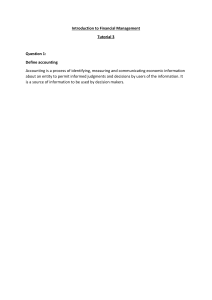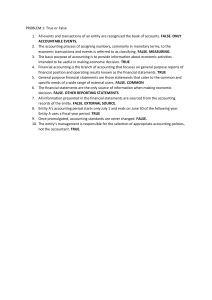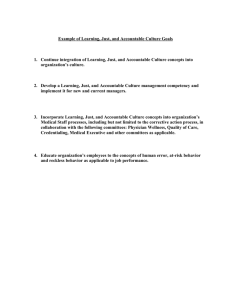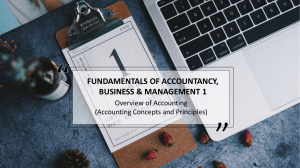Accounting Standards MCQ: Conceptual Framework Exam Questions
advertisement
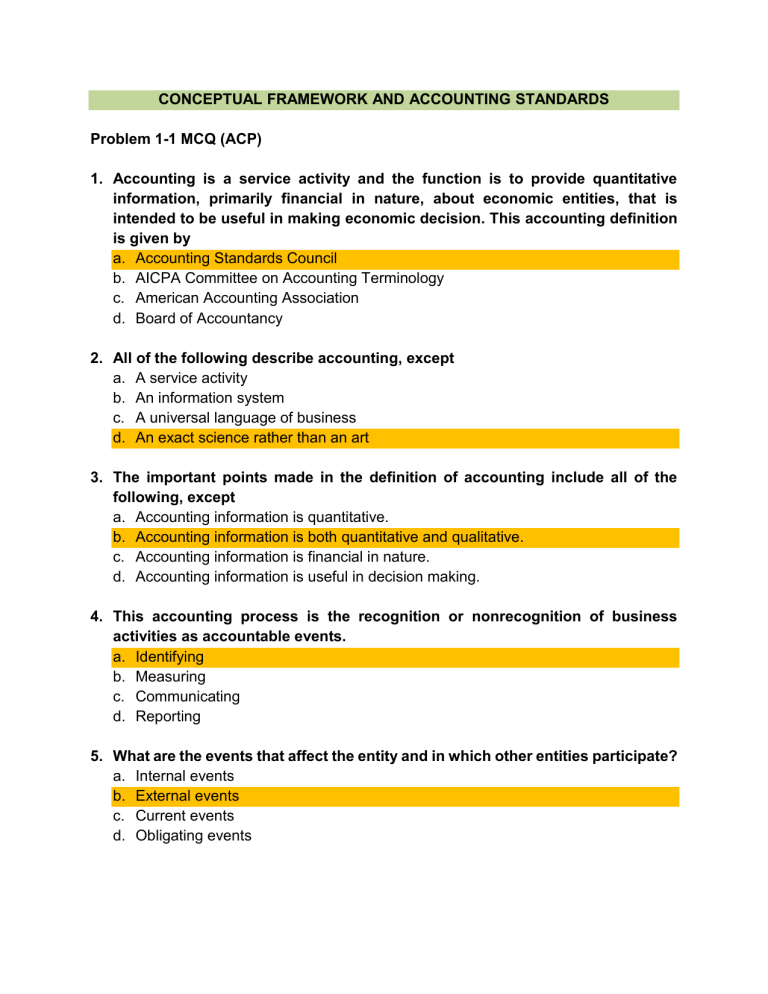
CONCEPTUAL FRAMEWORK AND ACCOUNTING STANDARDS Problem 1-1 MCQ (ACP) 1. Accounting is a service activity and the function is to provide quantitative information, primarily financial in nature, about economic entities, that is intended to be useful in making economic decision. This accounting definition is given by a. Accounting Standards Council b. AICPA Committee on Accounting Terminology c. American Accounting Association d. Board of Accountancy 2. All of the following describe accounting, except a. A service activity b. An information system c. A universal language of business d. An exact science rather than an art 3. The important points made in the definition of accounting include all of the following, except a. Accounting information is quantitative. b. Accounting information is both quantitative and qualitative. c. Accounting information is financial in nature. d. Accounting information is useful in decision making. 4. This accounting process is the recognition or nonrecognition of business activities as accountable events. a. Identifying b. Measuring c. Communicating d. Reporting 5. What are the events that affect the entity and in which other entities participate? a. Internal events b. External events c. Current events d. Obligating events 6. Which is incorrect in relation to an accountable event? a. An event is accountable when it has an effect on asset, liability or equity. b. The subject matter of accounting is the measurement of economic resources and obligations. c. Only economic activities are emphasized and recognized in accounting. d. Sociological and psychological matters are quantifiable. 7. What is the measuring component in the definition of accounting? a. The recognition or nonrecognition of business activities as accountable events. b. The assigning of peso amounts to the accountable events. c. The preparation and distribution of accounting reports to users of accounting information. d. The preparation of audit report by CPAs. 8. The most common financial attribute used in measuring financial information is a. Historical cost b. Current cost c. Fair value d. Value in use 9. The communicating process of accounting includes all of the following, except a. Recording b. Classifying c. Summarizing d. Interpreting 10. What is the overall objective of accounting? a. To provide the information that the managers of an economic entity need to control the operations. b. To provide information that the creditors can use in deciding whether to grant loans to an entity. c. To measure the periodic income of the economic entity. d. To provide quantitative financial information about an entity that is useful in making economic decision.
